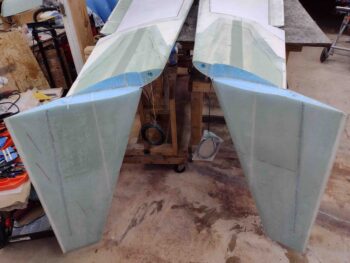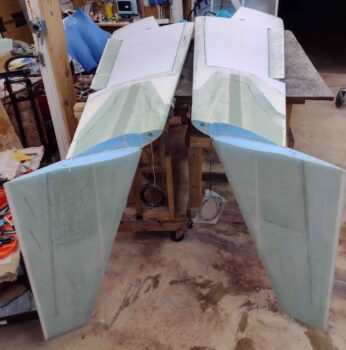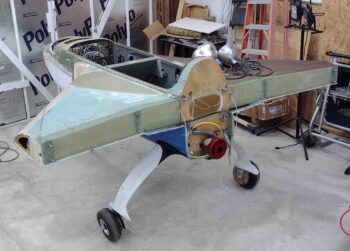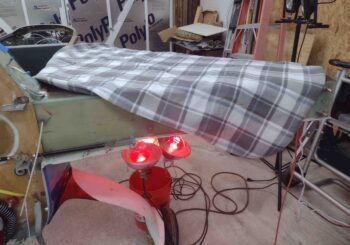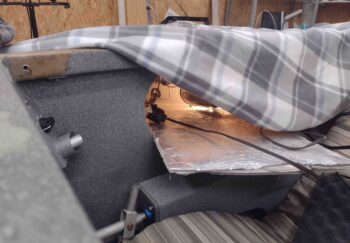Besides getting the left wing removed and flipped to allow working on the winglet inside corner layups, today was mainly about logistics and prep.
I spent a good 1.5 hours reorganizing the shop and moving the wings, fuselage, carts, large power tools, welders, etc. around to get the wings situated together on one side to allow for glassing.
Here’s a slightly more inclusive view of the entire wings on their new converted taller work platforms, specifically to allow for the wings to lay inverted without the winglets hitting the ground.
I positioned the fuselage in front of the double doors where within the next day or two it will make its trek about 100 yards to the garage to get outfitted with the IOX-340s motor, that will then allow me to ensure proper fit and spacing when I install the upper cowling.
In prep for mounting the engine, I flipped it upside down on its stand to allow the camshaft to get a good bath in oil… since it will probably be the last time the engine is flipped before first flight.
I’ll note that on the way to get outfitted with the engine, I’ll pause the fuselage transit for about 15 minutes and finish shooting the dark gray speckled paint inside the remaining bare areas of the nose.
With the wings off, I also took the opportunity to follow Gary Hunter’s advice in post-curing the EZ Poxy tanks with 3 large heat lamps underneath the strake and heated blanket on top. Gary recommends a minimum of 2-3 hours at 140-150° F. I don’t honestly know if it’s getting that hot internally inside the tank, but I’ll follow his recommendations regardless. My 10 second touch test is promising on the bottom, but not so much up on the top strake surface.
I also threw in a couple standard shop lights in the baggage compartment, and one on the outside strake just to keep things as warm as possible.
I’ll post cure the left fuel tank tomorrow, since I was too cheap to buy 2 heated blankets… plus I wanted to concentrate all the heat lamps onto one tank at a time. I’ll note that I do intend to post cure the entire airplane up to 176° F for the MGS 285 to reach its full strength, so if I miss the mark in getting high enough temps on these interim fuel tank post cures, it won’t be a deal breaker.

